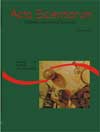<strong>On ideas and Institutions: the wealth of nations or the wealth of the nation? The ideas of Adam Smith and Friedrich List on the development of capitalism</strong> - DOI: 10.4025/actascihumansoc.v30i1.5106
Keywords:
Adam Smith, economics, liberalism, Friedrich List, protectionism
Abstract
This article establishes a comparison between two thinkers, whose analyses resulted in works that, each at his time, delineated the course of the world economy and unleashed debates concerning the economic policies adopted by different countries. Starting with the publication of The Wealth of Nations by Adam Smith in 1776, the era of liberalism began, a concept that guided in a predominant way the directions of the European economics, starting from the end of the 18th century and in the 19th century. Although it prevailed throughout the 19th century, liberalism did not escape objections. Already in the early 1800s, Germany’s Friedrich List presented another conception, which clashed directly with Adam Smith’s thought. With Germany as the center of his economical system, List, in his work The National System of Political Economy, criticized liberalism and his founder, affirming that such a conception applied to nations that had already achieved advanced industrial development, but it was not for less developed nations in economical terms, as was the case of Germany in the first half of the 19th century. From that moment, a debate began, which lasts until the current days.Downloads
Download data is not yet available.
Published
2008-09-18
How to Cite
Menezes, S. L., & Pereira, L. M. P. (2008). <strong>On ideas and Institutions: the wealth of nations or the wealth of the nation? The ideas of Adam Smith and Friedrich List on the development of capitalism</strong> - DOI: 10.4025/actascihumansoc.v30i1.5106. Acta Scientiarum. Human and Social Sciences, 30(1), 87-95. https://doi.org/10.4025/actascihumansoc.v30i1.5106
Issue
Section
Economic History
DECLARATION OF ORIGINALITY AND COPYRIGHTS
I Declare that current article is original and has not been submitted for publication, in part or in whole, to any other national or international journal.
The copyrights belong exclusively to the authors. Published content is licensed under Creative Commons Attribution 4.0 (CC BY 4.0) guidelines, which allows sharing (copy and distribution of the material in any medium or format) and adaptation (remix, transform, and build upon the material) for any purpose, even commercially, under the terms of attribution.
Read this link for further information on how to use CC BY 4.0 properly.























